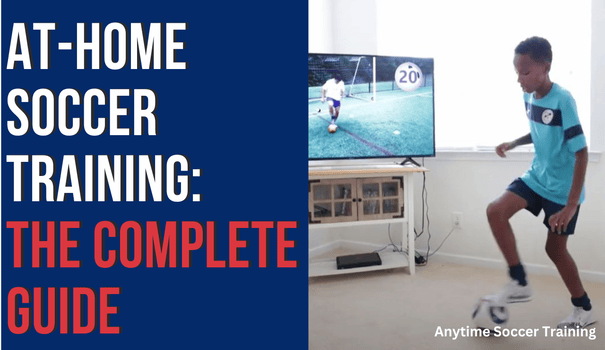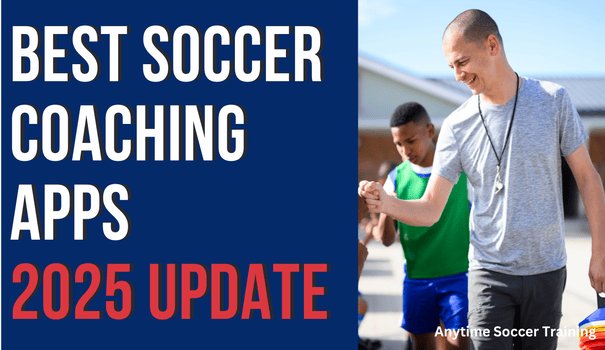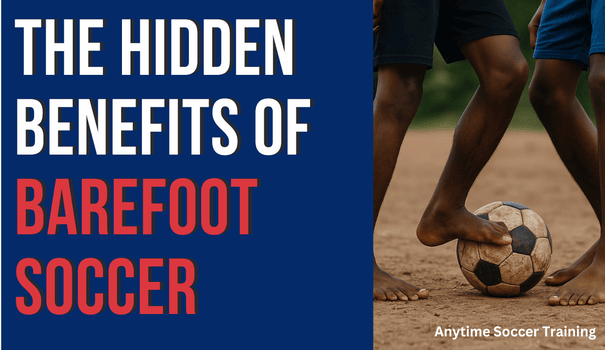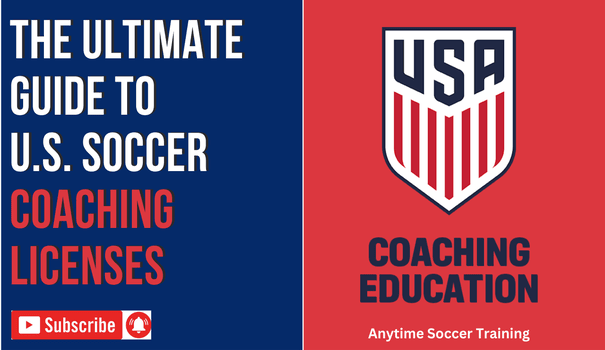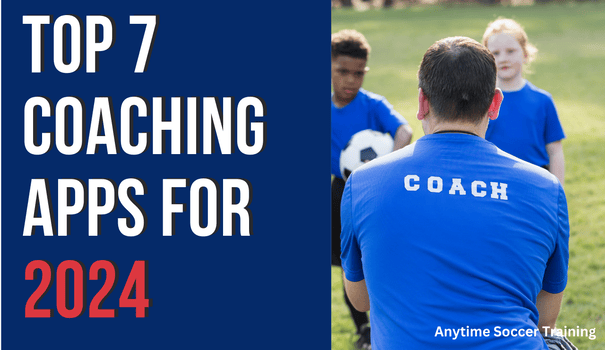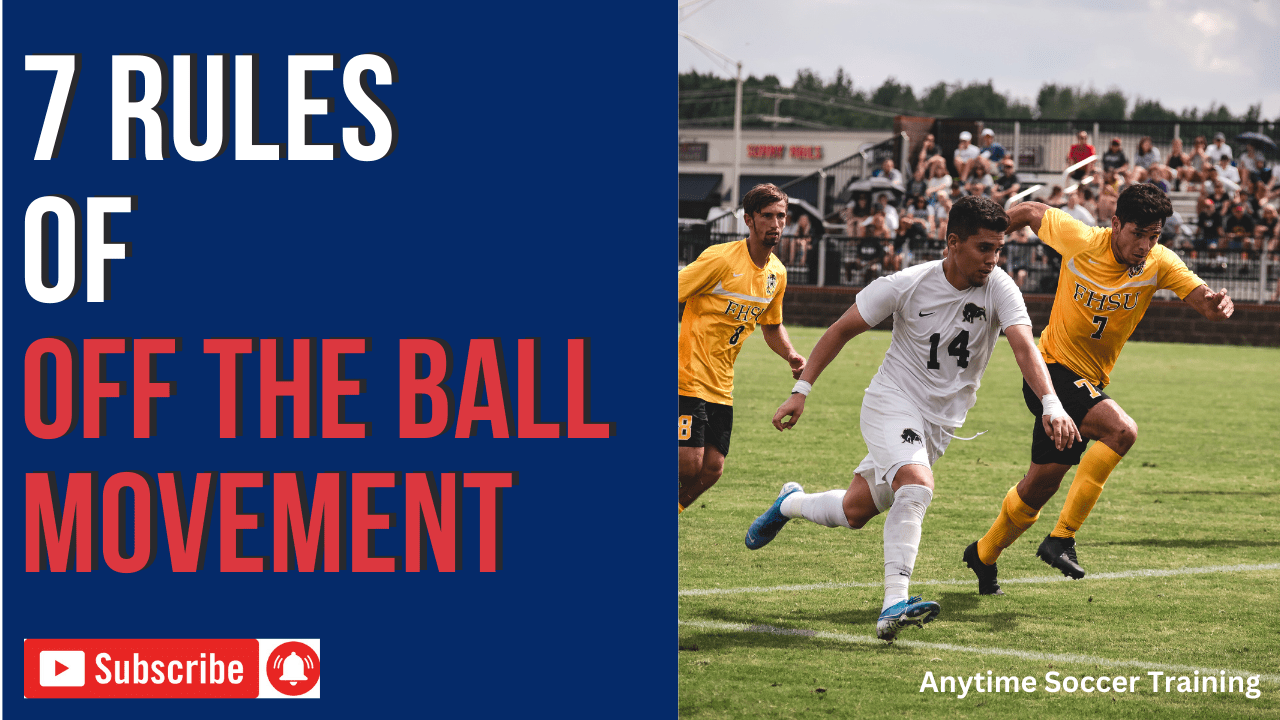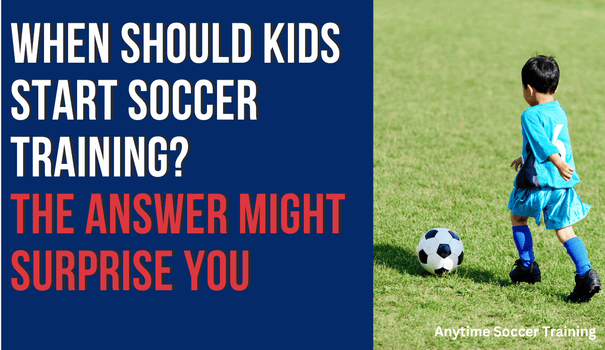
If you’ve been around youth soccer long enough, eventually you land on the same question many parents quietly wrestle with:
When should my child start soccer training?
As both a soccer dad and coach — someone who began training my sons at home with nothing but a hallway and a ball — I’ve learned that the real answer isn’t defined by age.
Some kids pick up a ball at two, others at six or even later, and both can become confident, skilled players. What truly matters is not the age, but the environment.
Before we dig into neuroscience, confidence, and development, we need to acknowledge the emotional force behind this question.
Related: 10 Misconceptions of Early Specialization
The Elephant in the Room: FOMO
Key Takeaway: Some parents rush formal training due to fear, not necessity — and early soccer engagement mainly benefits children when it’s playful rather than pressured.
Almost every parent feels it — even if they don’t say it. You see a child juggling effortlessly, dominating games, or joining a competitive team early, and a quiet voice inside whispers:
“Are we falling behind?”
I felt that long before I coached or created training programs. It’s a natural reaction in a competitive youth sports culture. But fear-based urgency rarely leads to healthy development.
Rushing the process can turn soccer into performance instead of play — and kids feel that immediately.
Summary:
- FOMO, not readiness, drives most early training decisions.
- Early training should feel joyful, not pressured or competitive.
What Science Really Says About Starting Early
Research in child development and motor learning does show that early, casual ball interaction helps children build coordination, balance, and confidence. But the research is equally clear: the benefits mainly come from play — not structured drills or formal coaching.
There is no scientific evidence suggesting kids must begin formal practice early to succeed. And there is no study showing children fall permanently behind if they don’t start at a young age.
Children learn physical skills the same way they learn language — through exploration, repetition, connection, and safety. When the ball becomes familiar early, confidence follows.
Summary:
- Early ball exposure helps—but best when rooted in play and curiosity.
- No research supports formal structured soccer training at very young ages.
Play First — Practice Later
Key Takeaway: For young children, soccer training can simply be interacting with the ball — not necessarily formal drills or instruction.
When adults think of soccer training, we often picture cones, reps, step-overs, and coaching cues. But for a five-year-old, soccer training may look like tapping a ball while they watch TV, dribbling to the kitchen, or chasing a rolling ball in the backyard.
Tom Byer emphasizes in Soccer Starts at Home that foundational ball comfort doesn’t begin at team practices — it begins where children spend the most time: home.
When my sons were young, there was no scheduled “training.” Instead, there were micro-moments — one minute here, three minutes there — that slowly built comfort and confidence. These moments mattered far more than early structure ever could.
Summary:
- For young kids, training equals familiar, frequent play with a ball.
- Tiny repeated moments build more skill than long, forced sessions.
Before Competitive Soccer: The Best Way to Start Training at Home
There’s no rush to start formal training, but there is value in adding short, low-pressure practice before your child enters competitive soccer.
Not organized drills — just simple moments together: a few passes in the living room, tapping the ball in the hallway, or a quick five-minute follow-along video.
Most early development should still come from play and movement, but small, consistent touches can quietly build confidence and familiarity with the ball.
When my sons were young, we kept it simple: one new move per week. Just a couple of minutes a day. Sometimes we skipped days, sometimes we laughed more than we trained — but over time, those tiny reps showed up in games naturally and confidently.
If you want an easy way to begin, our free Anytime Soccer Training 7-Day Training Plan is perfect.
Each session is under five minutes and requires zero coaching experience — just a ball, space, and a willingness to have fun.
“The goal isn’t to train early — it’s to make the ball feel like a friend before the game ever feels like a test.”
Why Short, Frequent Practice Works (The Brain Science)
Most children learn best through short, repeated exposure spaced out over time — a concept deeply supported by neuroscience.
Consistency builds neural pathways related to movement, timing, balance, and coordination. The brain strengthens these pathways (including myelin) through repetition — not duration.
This is why a child who practices for three minutes daily learns faster than a child who trains for an hour once a week. Frequent, low-pressure engagement supports deeper motor learning and skill retention.
Even more interesting: children sometimes perform skills in games they never formally practiced. That’s because the brain learns movement through exploration, emotion, and context — not strict memorization.
Summary:
- Short daily interactions outperform long, occasional sessions.
- Neuroscience supports spaced repetition and joyful experimentation.
You Don’t Need To Be a Soccer Expert to Help
Key Takeaway: Parents don’t need elite soccer experience — children need support, consistency, and access.
A common worry among parents is:
“I never played…am I even qualified to help?”
You don’t need to be. Young children don’t need perfect technique instruction — they need space, encouragement, consistency, and access. They learn through doing, not through instruction.
This is one of the main reasons I built Anytime Soccer Training — so parents could guide without needing to demonstrate or coach like a professional.
Your role isn’t to teach like a coach — it’s to make practice possible and enjoyable.
Summary:
- You don’t need soccer knowledge to support early development.
- Kids benefit most from encouragement and consistent access — not perfect coaching.
What You Need to Start at Home
The beauty of early ball training is how simple and inexpensive it can be. A hallway, garage, driveway, or living room works. A ball and a little space are enough.
Related: Essential Soccer Equipment
Fancy equipment, fields, or setups are optional. What matters most is access — making the ball part of everyday life. When children see the ball often, they touch it more, and more touches lead to comfort and control.
Summary:
- Start with a ball and a small safe space — nothing more is required.
- Access creates repetition, and repetition builds skill.
So… When Should Kids Actually Start Soccer Training?
Key Takeaway: Start when your child shows interest, and keep training fun, short, and based on their motivation—not pressure.
There is no perfect age or universal rule for when to begin soccer training. Some kids fall in love with the ball early, others later, and both paths are completely normal. What matters most is how the experience feels. If training feels joyful, they’ll come back to it. If it feels forced or stressful, they’ll avoid it.
A better question than “How early should we start?” is:
“How can I help my child improve while keeping soccer fun, confidence-building, and consistent?”
A Practical Timeline (Based on My Own Experience)
When my sons were young, training didn’t start with structure. It started with curiosity. Here’s how it unfolded naturally:
- Ages 3–5: Mostly play. Kicking a ball around the yard, tapping the ball down a hallway, rolling it back and forth in the living room. No expectations, no structure—just exposure and fun.
- Age 6: This is when we added short, intentional moments. A couple of minutes of simple ball control, surrounded by far more play than drills.
- After joining a club team: We increased to about one hour per week of focused practice outside team sessions. Still simple. Still positive. Still flexible.
- As motivation increased, We added more training because they responded well to it —not because I was overly pushy.
This approach worked because I met them where they were rather than trying to rush the process.
Why This Matters
Kids learn best when the experience feels enjoyable and belongs to them. A child who loves soccer will practice willingly. A child who feels judged, compared, or rushed will pull away—even if they started early.
So start when interest appears. Keep training short. Celebrate effort. Let curiosity lead. Progress grows naturally from consistency and enjoyment, not from pressure or comparison.
Summary:
- Begin when your child shows interest—not because others are doing more.
- Allow training to evolve from play to short, structured sessions.
- Confidence and consistency matter more than the starting age.
Final Thought: Build Love Before Expectations
Key Takeaway: The best time to begin soccer training is when it builds joy, confidence, and connection — not pressure.
If your goal is long-term skill, confidence, and enjoyment, keep early training simple:
Make it fun.
Make it short.
Make the ball visible.
Make the experience positive.
The most meaningful development rarely comes from perfect drills — it comes from the countless small, happy touches kids make when no one is watching.
Summary:
- Joy and consistency create better long-term development than early structure.
- Love for the game is the true foundation — skill grows from it.
